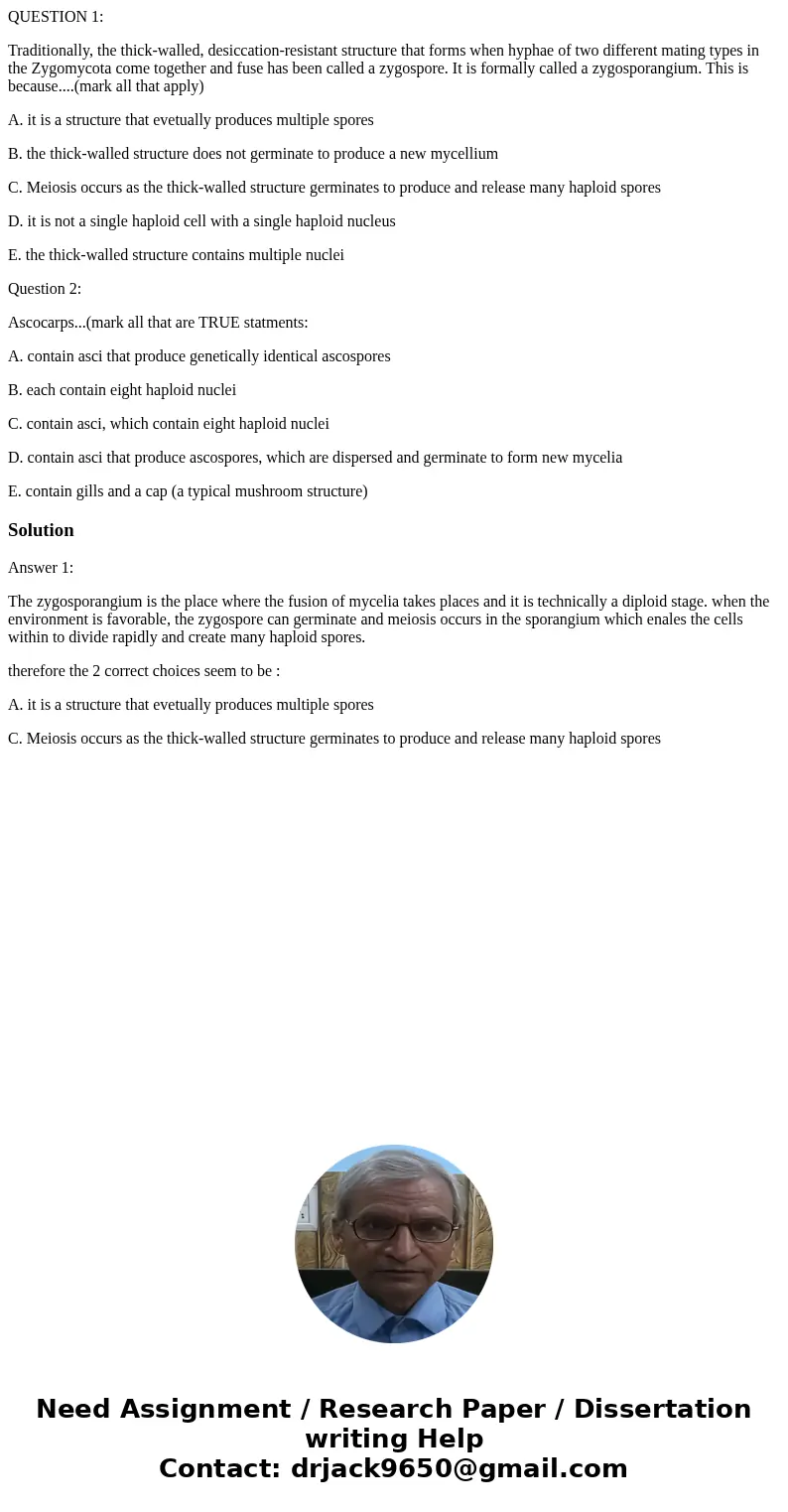QUESTION 1 Traditionally the thickwalled desiccationresistan
QUESTION 1:
Traditionally, the thick-walled, desiccation-resistant structure that forms when hyphae of two different mating types in the Zygomycota come together and fuse has been called a zygospore. It is formally called a zygosporangium. This is because....(mark all that apply)
A. it is a structure that evetually produces multiple spores
B. the thick-walled structure does not germinate to produce a new mycellium
C. Meiosis occurs as the thick-walled structure germinates to produce and release many haploid spores
D. it is not a single haploid cell with a single haploid nucleus
E. the thick-walled structure contains multiple nuclei
Question 2:
Ascocarps...(mark all that are TRUE statments:
A. contain asci that produce genetically identical ascospores
B. each contain eight haploid nuclei
C. contain asci, which contain eight haploid nuclei
D. contain asci that produce ascospores, which are dispersed and germinate to form new mycelia
E. contain gills and a cap (a typical mushroom structure)
Solution
Answer 1:
The zygosporangium is the place where the fusion of mycelia takes places and it is technically a diploid stage. when the environment is favorable, the zygospore can germinate and meiosis occurs in the sporangium which enales the cells within to divide rapidly and create many haploid spores.
therefore the 2 correct choices seem to be :
A. it is a structure that evetually produces multiple spores
C. Meiosis occurs as the thick-walled structure germinates to produce and release many haploid spores

 Homework Sourse
Homework Sourse